Every November since 1993 has been federally recognized as Military Family Appreciation Month. During this month, several military-themed holidays are celebrated. This period is a great opportunity to show your appreciation for both veterans and military families who have loved ones in the armed forces. If you know any of these people in your life or just want to anonymously help out with those you might not know, November is the perfect time to show them you recognize the uncommon challenges they go through.
Military families serve along with their loved servicemembers. They are aware of the risks involved in serving in the armed forces as well as the sacrifice of being away from them during long periods of training and deployment.
The history of Military Family Appreciation Month
In 1993, the Armed Services YMCA looked for a way to honor military families and recognize their sacrifice, dedication, and contributions to the armed forces which they’re an intrinsic part of. Thus, they came up with Military Family Appreciation Month as a time to do exactly that. After being officially endorsed by the President of the United States, November was chosen as the month in which the observation would take place.
 The appearance of the U.S. Department of Defense (DoD) visual information does not imply or constitute DoD endorsement.
The appearance of the U.S. Department of Defense (DoD) visual information does not imply or constitute DoD endorsement.What military-related holidays happen in November?
Several important holidays take place in November, and they’re perfect opportunities to plan out your shows of appreciation.
First is the Marine Corps’ Birthday on Nov. 10. This originated in 1921, when Marine Corps Order No. 47 was issued. This order intended to commemorate the founding of the Marine Corps and directed that it be repeated each year on the same day. This day is typically commemorated with the annual Marine Corps Birthday Ball. First held in 1925 and observed every year since, the ball includes entertainment, cake, and a formal dinner.
The celebration of the Marine Corps’ birthday has evolved over the years. In 1923, a formal dance was held at the Marine Barracks in Ft. Mifflin, Pennsylvania. Meanwhile, a mock battle occurred at the Washington Navy Yard, and a baseball game was held at Guantanamo Bay, Cuba. Later, in 1925, the first official Birthday Ball was held in Philadelphia. The cake-cutting ceremony began in 1952, which included the first piece of cake being presented to the oldest Marine present and being passed to the youngest as a symbol of the tradition passing.
After that is Veterans Day on Nov. 11. This day is especially important, as it is a federally-recognized holiday specifically meant as a day to pay respect to veterans. The day was originally known as Armistice Day to commemorate the end of World War I, but was later expanded to include all veterans.
Thanksgiving is also a part of Military Family Appreciation Month as one of the ideal times to give thanks to the people in our armed forces who have dedicated their lives to keeping America and its citizens safe from harm. Military families at the Thanksgiving table can use this opportunity to appreciate their loved servicemembers, while non-military families can take the time to show respect to both servicemembers and their families.
However you choose to recognize the holidays during Military Family Appreciation Month, it’s important to always give thanks both to servicemembers and their families so they know they’re loved and appreciated. In addition to the ever-important respect toward the members of the armed forces themselves, remember that the families of servicemembers have their own unique challenges to tackle every day and they deserve recognition just as much as their cherished servicemembers do.
Since the war on drugs officially began in 1971 under President Nixon, U.S. armed forces have been deployed in areas where drugs run rampant in an effort to reduce the number of narcotics entering the country. The U.S. government and its armed forces have stepped up tremendously in their efforts, with over $1 trillion spent on the war on drugs since its inception.
The war on drugs is still ongoing and shows no signs of ending any time soon, but that doesn’t mean the U.S. armed forces are going to idly sit by and watch drug smugglers and criminal organizations succeed. On the contrary: There have been numerous efforts to interrupt the flow of narcotics and keep both the U.S. and other countries safe from harm.
U.S. Coast Guard helps seize $475M worth of drugs from smugglers
The Navy is a key part of the U.S. armed forces’ contributions to the war on drugs. This year, a U.S. ship cooperated with a Royal Netherlands Navy vessel to confiscate $475M worth of drugs from smugglers in the Caribbean Sea and the Eastern Pacific Ocean. This included 3,892 pounds of marijuana and 24,700 pounds of cocaine. The seizure was ultimately hauled in and unloaded in Miami Beach.
Cdr. Jeremy M. Greenwood, the commanding officer of the 270-foot cutter stationed in Virginia named the Legare, praised the crew responsible for the bust, citing their commitment to duty. He also applauded the various crews who contributed both to the mission and the ongoing counter-drug campaign, which included the “dismantling of transnational criminal organizations.” He proudly claimed the operation “will result in significantly fewer drug-related overdoses.”
 The appearance of the U.S. Department of Defense (DoD) visual information does not imply or constitute DoD endorsement.
The appearance of the U.S. Department of Defense (DoD) visual information does not imply or constitute DoD endorsement.The U.S. Air Force sends help to Curacao to combat narcotics trafficking
40 miles off the coast of Venezuela is the island of Curacao. This nation is a Caribbean island that has a close alliance with the U.S. Together, they’ve spent two decades fighting international narcotics trafficking and transnational criminal organizations in the area. In 2020, those efforts gained a big boost in the form of extra equipment and personnel.
After the U.S. State Department accused Venezuela of drug trafficking, they sent four U.S. Air Force aircrafts to the island. These planes were meant to run detection and monitoring operations in an effort to interrupt the flow of drugs coming from Venezuela and surrounding areas.
The armaments introduced included an E-3 Sentry surveillance aircraft, an E-8C Joint Surveillance Target Attack Radar System plan, and two KC-135 Stratotanker aerial refueling aircrafts. Combined, these new assets, in addition to 200 extra personnel at the Cooperative Security Location (CSL), should give Curacao a leg up on drug trafficking operations in the area.
Air strikes used to destroy Taliban drug labs
Afghanistan has a primarily opiate-based economy. While the U.S. was still attempting to occupy Afghanistan in 2018, the U.S. armed forces, together with the Afghan military, targeted drug labs for precision air strikes. The U.S. Air Force’s F22A Raptor aircraft armed with small-diameter bombs were used to minimize civilian casualties.
The U.S. military has worked hand-in-hand with many foreign governments and entities in an effort to reduce drug trafficking and the spread of drugs into the U.S. and internationally. While the efforts are still ongoing, the U.S. armed forces have made significant progress in interfering with transnational criminal organizations and drug smugglers across the world. While the war on drugs persists, the U.S. armed forces constantly look for ways to help end it.
First observed in 1968 by President Lyndon Johnson as Hispanic Heritage Week and later broadened into 30 days and enacted into law by President Ronald Reagan Aug. 17, 1988, Hispanic Heritage Month runs from Sept. 15 to Oct. 15 every year. The month is a recognition and celebration of Hispanic people including those in the armed forces as well as first responders, as there are many unique and notable Hispanic service members, police, firefighters and paramedics all deserving of our honor.

Staff Sgt. Henry Meza: "He's going to be a soldier."
Staff Sgt. Henry Meza, a Honduran-born member of the Iowa National Guard, had the idea from a very young age that he was destined to serve. His grandmother used to say to friends and family, "He's going to be a soldier."
Growing up in his birthplace of Siguatepeque, Honduras, which had no electricity, Meza helped out with his family's coffee business by working on a farm. He regularly hauled 100-pound bags of coffee beans on his back at the age of 10. When he was 12, he immigrated to the U.S. to join his mother in New Jersey. Having been very active in school with track, wrestling and soccer, he earned a sports scholarship to Grand View University in Iowa. In 2012, he enrolled in the Iowa National Guard.
Meza found a special place in the National Guard's Service to Citizenship program, which helps relatives of young adults in the Guard become U.S. citizens. Meza, who gained citizenship in 2013, is well aware of how arduous the process can be without assistance from initiatives like these. Speaking of the program, he says diversity makes the National Guard more capable by connecting the military branch to different cultures and walks of life. When those people see others who share the same culture, they're more inclined to join the Guard, he says.
Sergeant Diana Munoz: The first Hispanic police sergeant in Greenville, S.C.
Diana Munoz knows that when first responders answer a call from a Hispanic family, they might be wary of trusting them. But when Munoz, who was born in Colombia, South America shows up, they're immediately put at ease.
A historic figure in Greenville, S.C., Munoz was the first Hispanic police sergeant to serve in the town's police department. As a supervisor, she's responsible for officers both in the Law Enforcement Center and when they're outside and on-duty.
Munoz hopes to one day be a police captain, though she acknowledges that she has a lot of work to do to reach that goal.
Joining Forces With the First Fully Spanish SNCO Course
New Mexico Air National Guard Master Sgt. Diana Melero-Sena participated in the first International Senior Noncommissioned Officer Course hosted completely in Spanish at Joint Base San Antonio-Lackland, Texas, between Oct. 4 and Dec. 8, 2021. Taught in the course were core leadership principles, ways to unite different forces and best practices meant to inspire the formation of strong professional relationships. Melero-Sena was one of two Citizen-Airmen who enrolled. The proud daughter of Mexican immigrants, she said that when she heard the Inter-American Air Forces Academy (IAAFA) was hosting a fully Spanish SNCO course, she knew she had to attend.
As the National Guard knows, with diversity comes strength. People of different cultures feel they have a place in the Guard because they see others sharing their culture within it. With the theme of 2022's Hispanic Heritage Month being "Unidos: Inclusivity for a Stronger Nation," the period reminds us that Hispanic Americans and everything they bring from their different cultures stand out as invaluable and integral parts of American society.
Friday, April 22 is Earth Day. This year, the U.S. Army is taking part in a more integrated way than ever with its new initiative to "sustain the mission, secure the future to meet and defeat climate challenges," according to the U.S. Army Environmental Command.
Let's take a moment to dive into the project a little more in-depth.
The Pentagon and climate change
When it comes to the Pentagon and the climate crisis, the department has a history of keeping an eye on environmental concerns. However, based on new information and at the recommendation of scientific data, worries about climate change have only increased. According to the UN's Intergovernmental Panel on Climate Change (IPCC), the world is expected to warm by 3.2C (or 37.76F) this century.
Global warming is only one of the major climate concerns. The U.S. government is also worried about rising sea levels, carbon emissions and habitat destruction. The Pentagon itself has taken steps to create a new strategy regarding the climate issue by introducing the U.S. Army's first climate change strategy.
For example, climate-related issues can lead to conflict, which is where the Pentagon's interests are peaked. From dwindling resources to water wars, the environmental changes have a severe impact on the United State's defense policies.
As a massive contributor to the federal government's carbon footprint, The Army is taking accountability and leading by example to lower its environmental impact — currently, the department produces about 56% of the federal government's carbon footprint and 52% of its electricity use, according to the Washington Post.
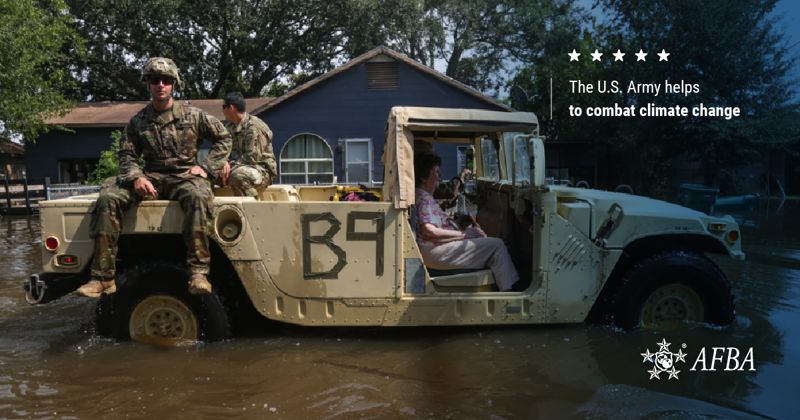
A new strategy
In its first strategic plan released in February of 2022, the Army outlined its response to global-warming-driven conflicts. In its climate strategy, it hopes to cut back on its own negative impact on the earth. Here are a few of its goals:
- Cut back on the military's emissions by half in eight years (2030).
- Convert all noncombat vehicles to electric by 2035.
- Develop electric combat vehicles by 2050.
- A new kind of officer training for the changing climate, dealing with warmer and more extreme environments.
These may seem like ambitious goals, but the hope is that the Army can be more efficient and move into the future with the tools to mitigate the damage and prevent further issues. But it is not only about the future, it is imperative to take action now.
According to Christine E. Wormuth, who is the Secretary of the Army, "For today's Soldiers operating in extreme temperature environments, fighting wildfires, and supporting hurricane recovery, climate change isn't a distant future, it is a reality."
While these goals may seem out of the Army's regular line of work, Paul Farnan, the acting assistant secretary of the Army for installations, energy and environment made it clear that the new strategy is actually aiding its main mission of fighting and winning wars. Now, these two issues have become intrinsically linked.
Earth Day is another opportunity for the U.S. Army to prove its commitment to sustain the mission, and secure the future to meet and defeat climate challenges. To learn more about the Defense Department's activities on Earth Day, take a look at the partnership for the planet.
In the military community, family members are connected and rely on each other. The same is true for the children of military members, who play a large role in this community. April is Military Child Month and we're taking the time to spotlight the experiences of military children.
The military child in 2022
The Department of Defense reports there are currently 1.6 million military children of active-duty members. These are kids who move around the nation with their service member parents, often going to different schools and making new friends at each base. In fact, the average military families move about three times more than civilians according to the School Superintendents Association.
Because of their parent's choice to serve their country, military children have unique experiences that help shape who they will grow up to be. Despite the fact that they often change schools and change support systems, the United States military does its best to provide consistency and support to the military children and their parents.
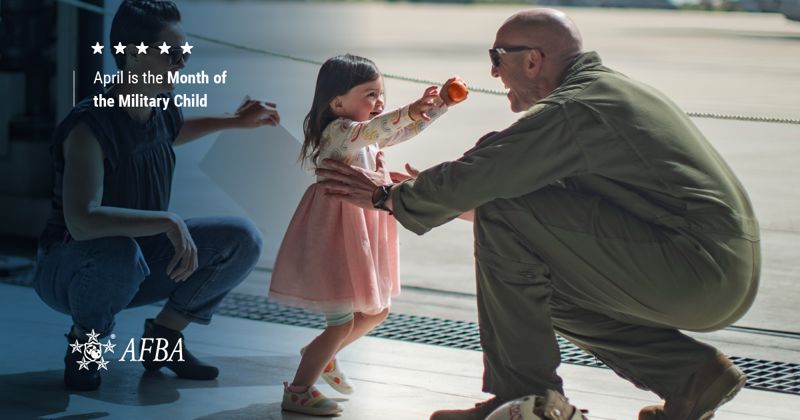
Community support
There are resources provided by the Department of Defense to increase community support and connectivity. The life of a military child can result in many different experiences that the children of civilians can't relate to. Here are some of the different ways that military children are assisted.
Military Kids Connect
Military Kids Connect is a program that aims to support children by offering unique resources for their particular situation. From relationships, feelings, health and overall wellness, there is plenty of information for parents and kids alike. Their website says that their "goal is to enhance military kids' quality of life and help them prepare and cope with significant transitions such as relocations, parental deployment, and family adjustment after injuries."
Boys and Girls Club of America
There are hundreds of Boys and Girls Club of America locations across the country, and all children of active duty, National Guard and reserve parents have a free membership to their local club. This partnership is 30 years old and works to provide "access to specialized opportunities, cultivate lifelong friendships, and develop the necessary resilience to build great futures." Click here to find a club near you.
4-H military partnership
Another great collaboration, the 4-H military partnership helps military children find friends, passions, hobbies and a community across the country. They focus on positive youth development programs and unique learning opportunities that encourage them to be confident leaders. 4-H offers predictable connections to kids who often lead somewhat unpredictable lives, as well as a good environment for military-connected children. 4-H has military liaisons who are the official point of contact between military branches and the organization, which helps the two communities come together to support the youth.
Aid for parents
Whether both parents or just one family member serves the country, it can be hard to know how to help your children cope. The DOD offers several different programs to help parents give their military children the best. Here is a list of just a few of the options that parents have through the government:
Thrive online programs: You can find courses on ways to parent positively through child stress management and health promotion.
Childcare: Military OneSource has a database of accredited childcare centers.
Exceptional Family Member Program: "Use this tool to navigate through the Department of Defense's network of services and support for families with special needs."
February is Black History Month and, while it is important to take note of history all year round, we're using this opportunity to share and honor Black veteran stories. This month, we're highlighting the inspiring story of Black American war veteran Roy M. Johnson, Sr. who fought bravely as a medic in the Korean War, Black Americans faced inequalities on the front lines and at home when they returned from war, despite their contributions to the country.
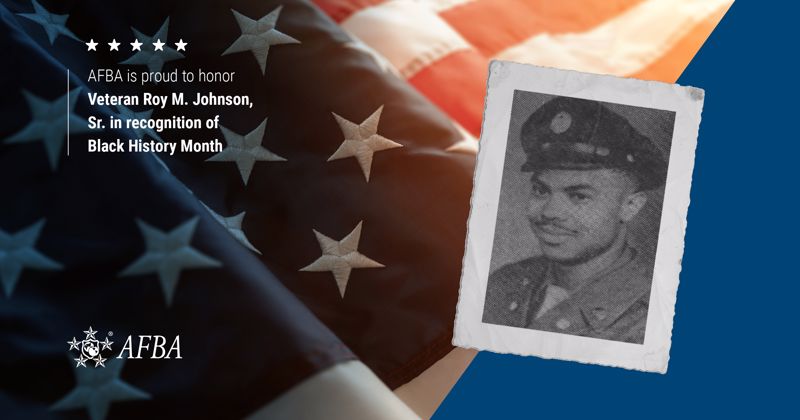
A story of bravery
Roy Johnson was born in 1922 in Lincolnton, GA. Just over 20 years later, he was drafted into the war in Europe where he served until it ended. His story is one of bravery, perseverance and service to the United States of America.
By 1950, Sergeant Roy Johnson was a medic in the US Army. Like most active military members of the time, there came an opportunity for him to volunteer for a dangerous mission, where he would risk his life further to protect his country and his deep-held beliefs. Sergeant Roy accepted the mission and was sent to the frontlines of the Taejon area in Korea. There, his task was to get the wounded soldiers from the frontline and bring them back to the first aid station.
The backroads of the countryside were notoriously confusing and difficult to navigate, and Sergeant Johnson's journey to the Taejon area was no exception. At a crossroads, his path intersected that of several enemy tanks that had somehow broken through American lines. He came under unexpected enemy fire, especially because his vehicle was marked with the Red Cross symbol. His traveling companion was killed in the onslaught and Sergeant Johnson's hand became badly wounded (later it would be completely amputated).
Sergeant Johnson fell off the vehicle and while laying on the ground, was subsequently shot three times in the back. An hour after this conflict, when the enemy was gone, he climbed onto another medical vehicle and drove himself to find his comrades. Badly wounded, he lost consciousness immediately.
Not yet completely safe, the field hospital where he was taken to be cared for fell under enemy machine gunfire. Escaping the enemy once again before the hospital was taken by the North Koreans, Sergeant Johnson was sent first to Japan and then to Walter Reed Medical Center. Not only is this the hospital where his hand was amputated — it's where he met Sergeant Alfonzo Spencer (the father of current AFBA President, General Larry Spencer). The two would become deep friends for the rest of their lives.
Before being discharged from the army in 1958, Sergeant spent another eight years at Bethesda Naval Hospital where he was an Occupational Therapy Technician who trained other war amputees on how to use their new prosthetics effectively. Along with his honorable memory of service, Sergeant Johnson lives in Maryland today with his children.
To learn more about this inspiring Korean War Veteran, check out our YouTube channel.
Aside from all the active branches of the United States Armed Forces, there are reserve components of the armed forces. February 19th is the coast guard reserve's anniversary, so we're tipping our hats to all Armed Forces reserves, collectively called the National Guard and Reserve. Title 10 of the United States Code, a document that outlines the role of armed forces in the United States, reveals the purpose of reserve components.
The purpose of the reserves
According to the document, "the purpose of each reserve component is to provide trained units and qualified persons available for active duty in the armed forces, in time of war or national emergency, and at such other times as the national security may require, to fill the needs of the armed forces whenever, during and after the period needed to procure and train additional units and qualified persons to achieve the planned mobilization, more units and persons are needed than are in the regular components."
Basically, the reserves are a resource for active duty armed forces to use whenever there is a national emergency that requires additional support. They usually perform a minimum of 39 days of military duty per year in order to be prepared for when they're needed. Here's a list of the regular reserves in the U.S.:
- Army Reserve.
- Navy Reserve.
- Marine Corps Reserve.
- Air Force Reserve.
- Coast Guard Reserve.
Joining the reserves
Joining the military reserves could be a better option for some than participating in the active-duty military. Not only are you still able to work to protect your country, but you are also able to do so in a more manageable way, which may suit some people better. This is because members can keep their civilian jobs and continue their education. The standards to join the reserves are still rigorous and draw reliable, qualified individuals. While there are some minor differences in each branch's reserves, the basic requirements are the same and the same state benefits are offered.
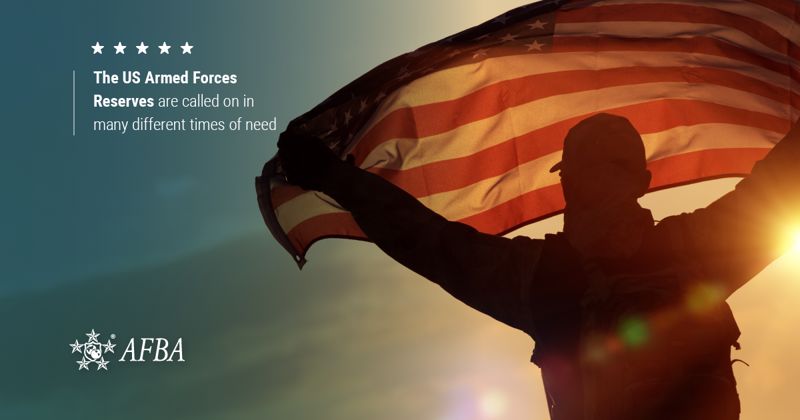
Eligibility status
According to MilitaryOneSource, here are the basic standards that must be met to qualify for the reserves:
- Be a U.S. citizen or resident alien.
- Generally, be between the ages of 17 and 42.
- Make it through the armed forces physical exam.
- Pass the Armed Services Vocational Aptitude Battery test.
- Meet the minimum Armed Services Vocational Aptitude Battery (ASVAB) eligibility standard.
Before meeting these requirements, anyone interested in joining the reserves must contact a recruiter, who would be happy to help them get started. A good place to begin your journey is the recruiting website of your desired branch:
- Army National Guard.
- Army Reserve.
- Navy Reserve.
- Marine Corps Reserve.
- Air National Guard.
- Air Force Reserve.
- Coast Guard Reserve.
Despite the fact that being in the reserves is less of a time commitment than active duty, there are still important obligations that you'll need to fulfill. These include things like initial training, a monthly drill, annual training, possible activation and commitment time.
These obligations come with many different benefits for those who choose to devote a portion of their time to their country. For example, reserve members get part-time pay that depends on their level of commitment and service, as well as health care coverage from TRICARE Reserve Select.
The United States Armed Forces Reserves are an important part of the military, and the country has called on them in many different times of need.
January 15 is National Hat Day, and no one knows the importance of a good hat more than members of the military and first responders. Unlike a run-of-the-mill baseball hat, military hats and those worn by first responders command a certain reverence and value. Just like the rest of a uniform, headgear can let the world know important facts like rank, status or military branch. Let's celebrate National Hat Day by taking a closer look at the history and meaning behind the many unique hats worn by these groups.
Military hats
Many civilians may not know that military members refer to their hats as "covers." In the Army, members wear different berets that have a specific meaning. This tradition dates back to World War ll for the United States, though militaries across the world have been using berets to signify status for centuries. In the U.S. the color of the hat is very meaningful for those in any branch of the military. Here are some examples of different hats and their significance:
- Black berets: This headgear is used in the fancy dress uniform of army members.
- Brown berets: In 2018, the army created a unique hat for members of the Security Force Assistance Command.
- Green berets: Perhaps one of the most well-known styles of berets, green is worn by army members who are special forces soldiers.
In addition to the berets, the army has many other hats, each with its own meaning. Generals have their own caps, depending on rank. These designs have changed over time to reflect the dress of the era. The army is a simple example, but every branch of the military has its own important hats for every rank or service provided.
There are different military uniforms for different occasions. The recognizable Navy cap has different insignias on the visor to signify rank. Captains and commanders have "dark blue cloth, embroidered with two rows of gold oak leaves and acorns." On the other hand, Lieutenant Commanders and lower ranks have a plain visor. There are even different pins that are positioned on the cap depending on rank and occasion.
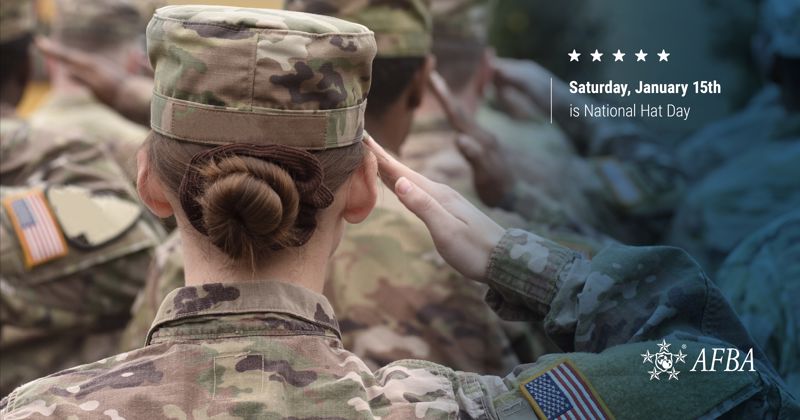
Military traditions
The U.S. military has its own uniform designers who strive to make uniforms that are practical, modern and effective. Regardless of rank or year, each branch has its own age-old traditions and requirements of its members. For example, when dressed in a formal uniform hat, a member must wear it outside, remove and carry it inside and keep it off in any military aircraft. In addition, service members are not allowed to salute while their hats are off. If a member is attending a funeral in their dress uniform, they must keep their cover the entire time as a sign of respect, whereas a civilian would likely take their hat off.
First responder hats
For firefighters, hats are more than just an accessory. Their helmets are created to protect them from potentially dangerous situations like falling beams, rafters and other debris. In addition, these helmets are usually also equipped with a visor, eye protection, and a light for maximum functionality.
The police force also has a long history of different hats and helmets, but the modern first responder wears different headgear depending on the occasion and rank. Most of the time, police officers wear baseball hats or other casual headgear (depending on location and force) instead of the typical custodian helmet that is worn by officers in the UK.
With its many different customs and traditions, military and first responder headgear are more than just a stylish accessory to the rest of the uniform.
The U.S. military offers a plethora of career options as well as training opportunities, often at a reduced cost and sometimes it is even paid for in full. While many think of the military as consisting solely of combat personnel, there are a lot of other long-term job opportunities in every branch. As 2021 comes to a close, let's take a look at the future trends of the military and career trajectories.
Most popular careers in the military
According to the Bureau of Labor Statistics (BLS), enlisted personnel and officers have a wide range of career options. Here are some of the most common career fields found throughout the U.S. military branches:
- Engineering.
- Medicine.
- Administration.
- Human resources.
- Protective services.
- Mechanics.
Regardless of service level, members of the military have many different opportunities, but there are a few that stand out and are increasing in popularity and demand.
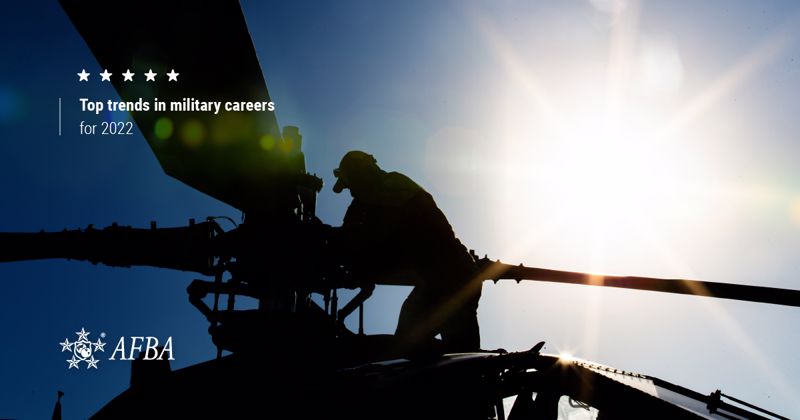
Engineering, science and technology are on the rise
According to a BLS report published in March 2021, engineering, science and technological careers make up the majority of total enlisted personnel with a total of 170,642 people.
- Army: 42,202.
- Air Force: 53,672.
- Marine Corps: 27,810.
- Navy: 46,958.
This field is booming, in part due to the need for more advanced technology in the military. The Department of Defense's most recent proposed budget for U.S. research and technology development has surpassed any previous budget proposal. According to Military and Aerospace Electronics, "Pentagon experts want $111.96 billion in 2022 for research, development, test and evaluation (RDT&E), which would be a 4.2 percent increase from 2021."
An increased budget means that more people and experts will be needed to execute the elevated technological requirements. Here are some of the most popular jobs within this career path:
- Security analysts
- Civil engineers
- Environmental engineers
- Computer network architects
In addition to these STEM career path options, the existence of the United States Space Force has welcomed a plethora of new opportunities. According to their website, the Space Force is looking for those who are interested in science and technology, including:
- Space operations officer
- Developmental engineer
- Intelligence officer
- Space systems programming
- Cyber surety
To learn more about your options as an officer, an enlisted military professional or a civilian, be sure to check out the career section of their website. As of now, there are only about 6,434 personnel assigned to the Space Force, but there are plans to beef up the project. In fact, the Air Force's FY22 budget requested "$156.3 billion represents a 2.3% increase, and the Space Force's budget of $17.4 billion is a 13.1% increase," according to airforcemag.com.
Combat specialty
Combat is still an extremely important component of what each branch does, despite the variety of other options. According to BLS, an enlisted officer who specializes in combat plans and directs "military operations, oversees combat activities and serves as combat leaders. They may be in charge of tanks and other armored assault vehicles, artillery systems, special operations, or infantry units. This group also includes naval surface warfare and submarine warfare officers, combat pilots, and aircrews."
The BLS research study found that there were a total of 164,390 enlisted personnel in the combat occupational group, a vast majority of them being in the Army. To learn more, check out this helpful resource, regardless of your preferred branch.
BLS research makes it clear that technology and science are the fastest-growing military career paths, followed by the plethora of combat specialty opportunities. In third place was the occupational group of vehicle and machinery mechanics, with a total participation number of 61,506 people across all branches. To learn more about each branch's employment opportunities, visit their respective websites.
After nearly two years of unprecedented changes as a result of the COVID-19 pandemic, some things are finally getting back to normal for Americans. The precautionary measures impacted the general public and changed how military personnel and first responders operated in their daily lives. While the virus is still impacting the economy and most workplaces, the creation of vaccines and a better understanding of how COVID-19 works have helped aid in returning to normal. So what does this mean for active-duty members and first responders?
Military members return to normal
When the COVID-19 pandemic hit America, the Department of Defense (DOD) implemented serious travel restrictions on active duty military members. According to the Chinese government, patient zero was believed to have contracted the virus on November 17, 2019, in Wuhan, China. On Jan. 30, 2020, the DOD U.S. Indo-Pacific Command restricted travel to China and the quarantine requirements and other restrictions just increased from there in order to maintain safety standards. Now, things are far less restrictive than they once were.
On August 25, 2021, the Deputy Secretary of Defense gave "a message to the force, directing secretaries of the military departments to immediately begin full vaccination of all members of the Armed Forces under DOD authority on active duty or in the Ready Reserve, including National Guard, who are not fully vaccinated against COVID-19."
The existence of the vaccine has given more freedom to the U.S. armed forces members and the ability to visit their families and return to normalcy. Some service members are attending support groups in the wake of their homeland COVID-related duties. Travel restrictions have been loosened for those who are vaccinated, leading to more gatherings and less strict quarantine restrictions for active-duty military members. In fact, COVID-19 cases have been improving in some states as compared to early in the pandemic, especially in the Northeast U.S.
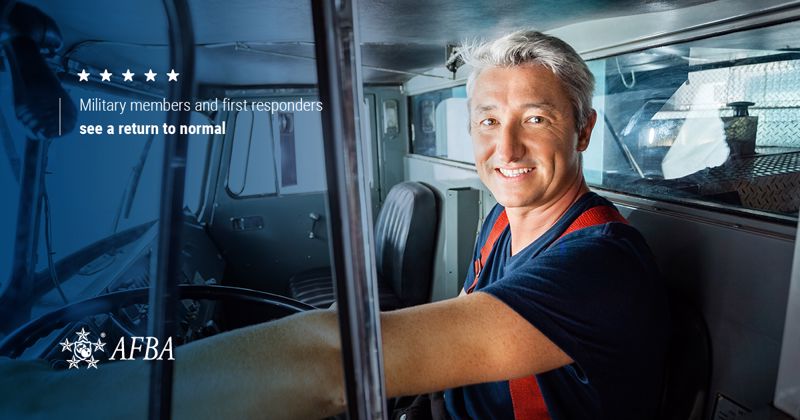
First responders seeing some return to normalcy
Society has relied on EMS service members and other first responders more than ever during the pandemic, their work more critical than ever in light of the virus. In most states, first responders were given some priority when it came to receiving the vaccine. Similar to the armed forces, first responders have received more freedom as a result of obtaining the vaccine.
The way that first responders do their job has changed, but now they are able to continue doing their jobs and some may say that things are returning to usual life. According to CNBC, health care workers are finding joy in the small things and their 2020 report showed that participating in TikTok challenges and coming together as a community helped boost spirits.
For both the first responder and military communities, having a sense of community is the best way to deal with the stress of the past two years. The CDC lists spending "time outdoors either being physically active or relaxing," and doing "things you enjoy during non-work hours" as a way to cope with difficulties and enhance resilience. Regardless of the community, people have become adept at pushing through the realities of covid and finding joy in the outside/family/etc
More gyms are starting to open and allow group classes, making it easier to blow off steam. Military bases have continued their physical testing requirements and opened up their training facilities. According to the Military Health System, some active-duty service members have been doubling down on their exercise routine in order to promote good mental health.
Time has offered some reprise from the chaos of late 2019 and early 2020. Military members and first responders who have had to adjust their daily work routines are finding comfort in returning to the normalcy of attending events and building a sense of community outside of computer screens.
